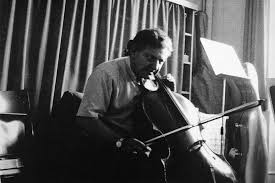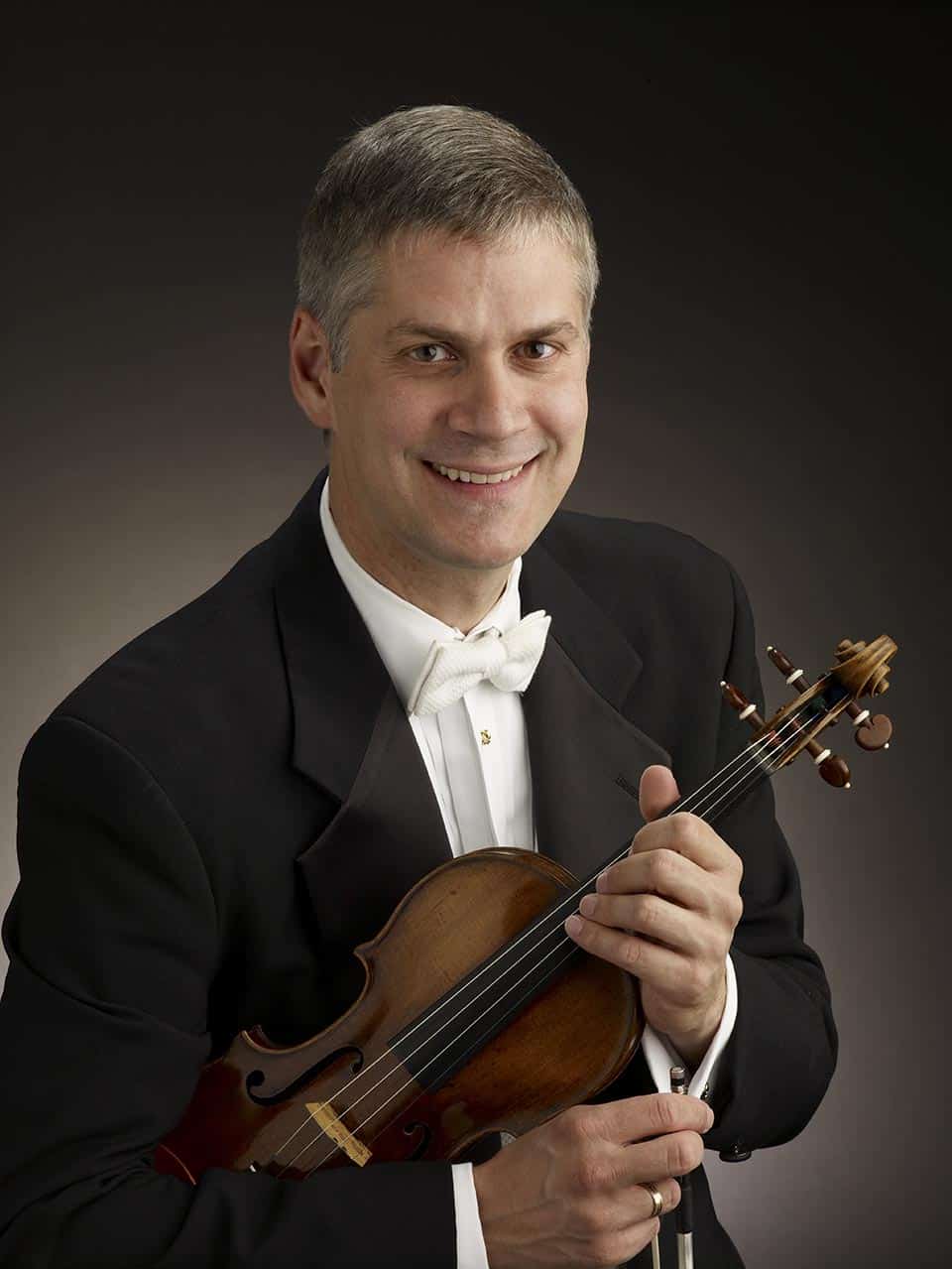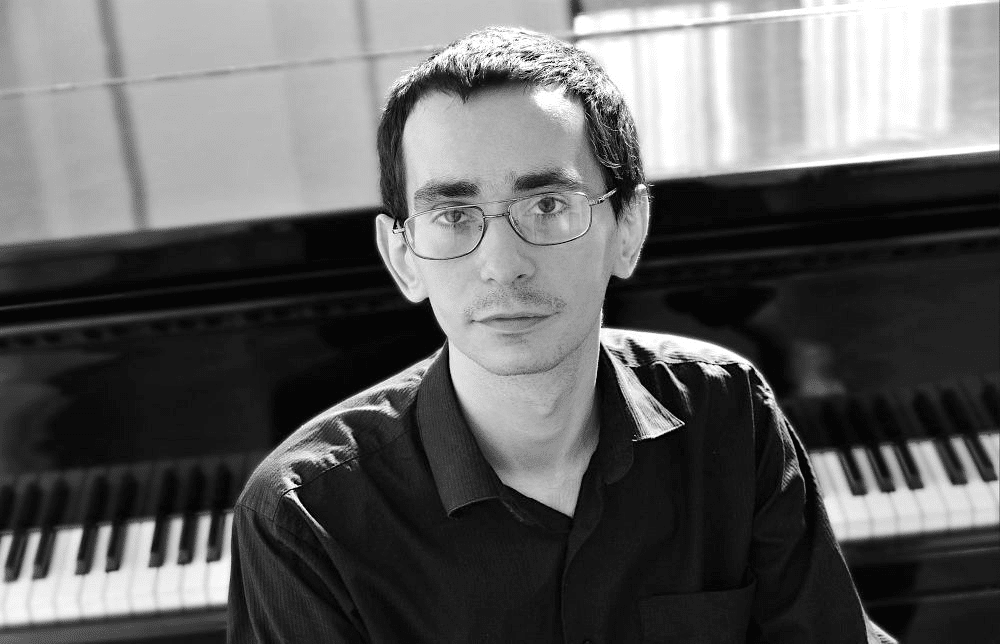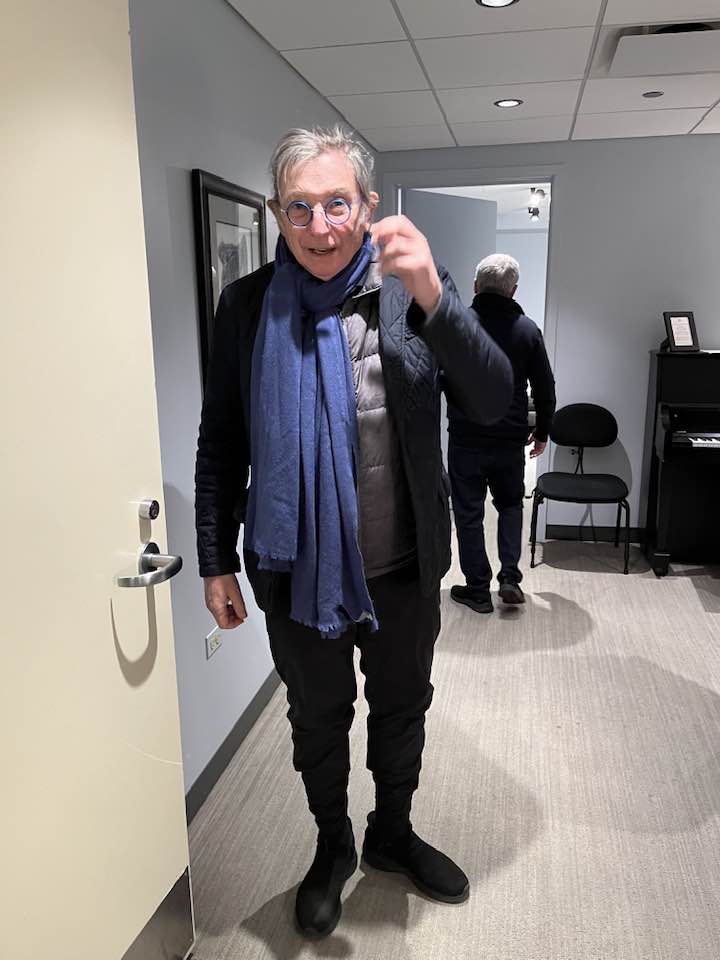A cello legend has died, at 100
mainWe have been informed of the death of George Neikrug, renowned for his recording of Bloch’s Schelomo with Stokowski. Neikrug died at his home near Boston on March 8th, a day after his 100th birthday.
Starting out as principal cello of the Baltimore, Pittsburgh and Los Angeles oirchestras, he went on to teach at Detmold, Oberlin, University of Texas-Austin, and (from 1971) at Boston University.
He is survived by his sons, the composer Marc Neikrug and the actor Barry Neikrug.






I studied with Mr. Neikrug in the 1990s at Boston University and credit him with changing both my understanding of music and technique. It was a pleasure and joy working with him and even after all these years, he looms large in everything I play and everyone I teach. Last of a great generation, he will be missed. Farethewell, Mr. Neikrug. We will continue your tradition of the Romantic playing style!
https://youtu.be/Ptrb2XQPyS0
Very sad to hear this news. George was a student of Feuermann and a disciple of Dounis. At his town hall debut he played the Paganini 1st violin concerto on the cello, with the Suaret cadenza! A unique character and a generous teacher. A”H
Apropos playing Paganini’s first violin concerto on the cello, George Neikrug explains why he did it:
“I used to be referred to cavalierly as “a good musician,” which often translates as “He doesn’t play too well, but he knows a lot.” I desperately wanted to escape that label so I worked extremely hard with Dounis.
I soon gave a Town Hall recital, where I believe I was the first person to successfully play the Kodaly Unaccompanied Sonata in New York. There was one disastrous performance before mine by Beatrice Harrison, but I don’t know of any others.
In the second half of the recital I played a Paganini Caprice and “Round of the Goblins” by Bazzini, which I had programmed to prove that I should now be considered a virtuoso.
Unfortunately, as was the custom in those days, the critics only stayed for the first half, so all the reviews once again said that I was a “very good musician,” the very label that I was desperately trying to escape.
I only had enough money for one more concert, so I asked Dounis what the most difficult piece was for the violin. He mentioned the Paganini Concerto with the Sauret Cadenza. I immediately declared that I would work on this piece and play it in New York, and put it in the second half of the concert. This time the critics would have to stay for the entire concert because they couldn’t just write, “… and he played a Paganini Violin Concerto in the second half” without providing any further details.
And I was right. This time they stayed, saying that I had a wonderful technique but that the composition was “musically worthless.” Sometimes you just can’t win.
After that concert I acquired the reputation as being kind of a technical wizard. I must admit that I became enamored with technique. I was probably quite obnoxious to my colleagues because I would constantly show off in orchestra rehearsals, pretending that I was just practicing for myself. Eventually I got through that period and went back to trying to be as expressive with my playing as possible.”
This comes from a long interview of George Neikrug by Tim Janof, which should interest readers:
CONVERSATION WITH GEORGE NEIKRUG by Tim Janof
http://www.cello.org/newsletter/articles/neikrug/neikrug.htm
I came to Boston University near the end of his tenure there. He was a legend as a virtuoso player of idiosyncratic tendencies and as a great teacher, musician, and character. A performance he gave of Saint-Saëns’ Cello Concerto No.1 at that time was unforgettable for me. While he was well past his prime and technically fallible in the outer movements, the slow movement was a display of Apollonian musicianship the likes of which is seldom heard today. His exquisite timing and ability to manipulate color made this delicate music something even more ethereal. Hardened though I was at that age, George brought tears to my eyes. Yes, unforgettable.
Among his recordings, there is an excellent take of Ernst Toch’s String Quartet in D flat with the Westwood String Quartet (Louis Kaufmann was the first violinist). It’s a truly great recording. R.I.P., George.
Mr. Neikrug was my professor for the last 3 decades, since I began at BU in 1988. He took a cello student with some potential, tied up in knots of tension, and patiently led me down a path toward the discovery of natural movements and technique that transformed not only my cello playing, but informed my approach to piano tuning technique (my currrent profession of 25 years) and every activity that involves physical motion! I will greatly miss my occasional lesson which had grown far too infrequent this decade… While we may not have been familial enough to be considered friends or companions, he was certainly my mentor, teacher, and guide!
Thank you for your eloquent memorial tribute. As an accompanist for Neikrug’s students at Oberlin and U. of Texas, I found a new world of expression through music. His performances at Oberlin of Bach suites and Kodaly sonata had an enormous affect on my musical awareness. His warm, positive kindness, combined with incredibly articulate technical advice to his students made a lasting impression on me of what a really fine teacher and performer should be.